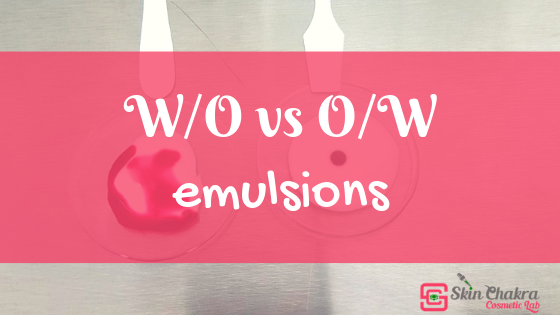Everybody who has made just one simple emulsion should know the difference between a water in oil and an oil in water emulsions but since repetition never hurts and since we still receive questions and inquiries that go back to the root of this difference I thought I may dedicate a short post and video to this question again.
Before you proceed please go an read this post that I wrote about a year ago
Water in oil or oil in water?
well, the main difference or the cause of the difference is the nature of the emulsifier. It dictates which emulsion you're making. W/O emulsifiers and O/W emulsifiers have different natures and different HLB ranges. Except for lecithin, with which you can create both types of emulsions under certain circumstances, you can not use a W/O emulsifier to create an O/W emulsion.
There is a phenomenon called phase inversion and this happens to some emulsifiers. The emulsion that should be a W/O turns to an O/W emulsion and vice versa during the emulsification (this can happen because of temperature, stirring or certain additives). But these phase-inversed emulsions fall apart in a few minutes and are not stable. But this is out of the scope of this post.
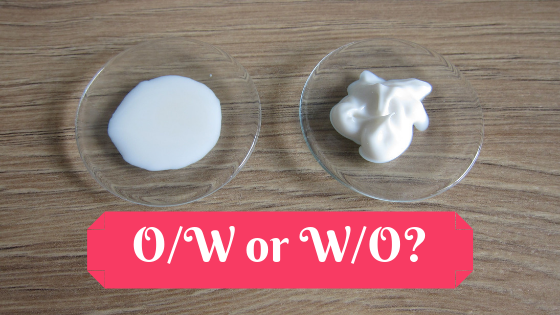
The nature of the emulsifier determines whether an emulsion is O/W or W/O and NOT the order of adding one phase to the other phase
Anyway there are some fundamental differences (in manufacturing procedure, application and properties) and we're going to list them just as a reminder:
1- The structure
although emulsions have various structures, in a very general way imagine a W/O emulsion as water droplets dispersed in an oil external phase and an O/W emulsion as oil droplets in a water external phase.
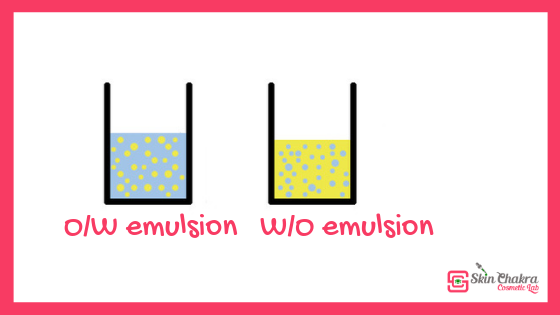
So far, so good and this is clear to every elementary student of skin care. But what does this really mean?
1- You can not measure the pH of a W/O emulsion after it is made
The W/O emulsion has an external oil phase and you can not disperse it in water. Even if you try to, it doesn't blend.
This is why you need to measure and adjust the pH of a W/O emulsion BEFORE you mix the water and oil phases
2- You can not use a W/O emulsion for a cleansing product such as a cleansing milk, shower cream etc.
in fact, W/O emulsions have a kind of water repellancy this is why they are used in products that should be water repellant or water resistant:
- diaper cream
- sun/beach care
- waterproof or long-hold foundation
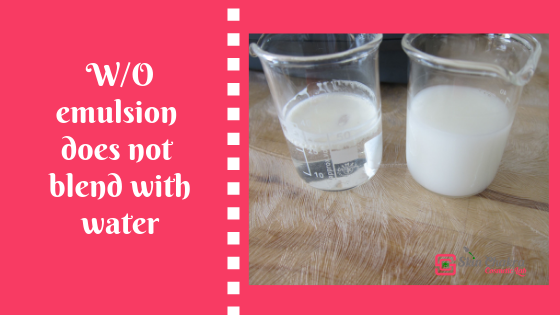
You can easily observe (and comprehend) the difference between the O/W and W/O emulsions by adding a water soluble colour or an oil soluble colour to them.
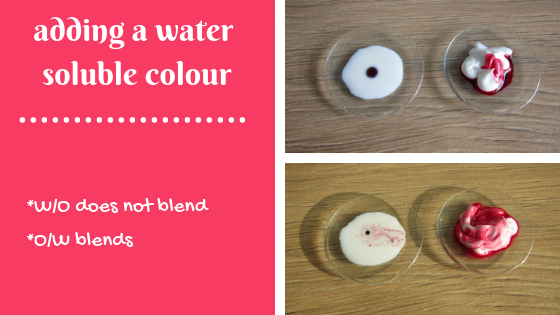

In this video, we demonstrate the main differences between a W/O and an O/W emulsion and the ways you can distinguish them.
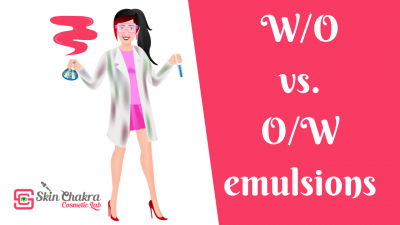
BeHappy and have fun
